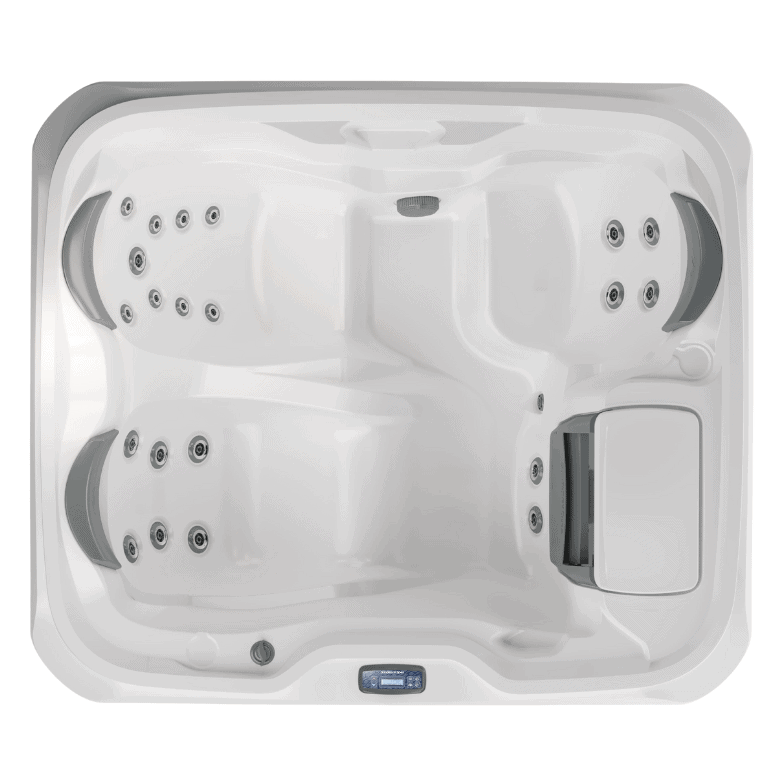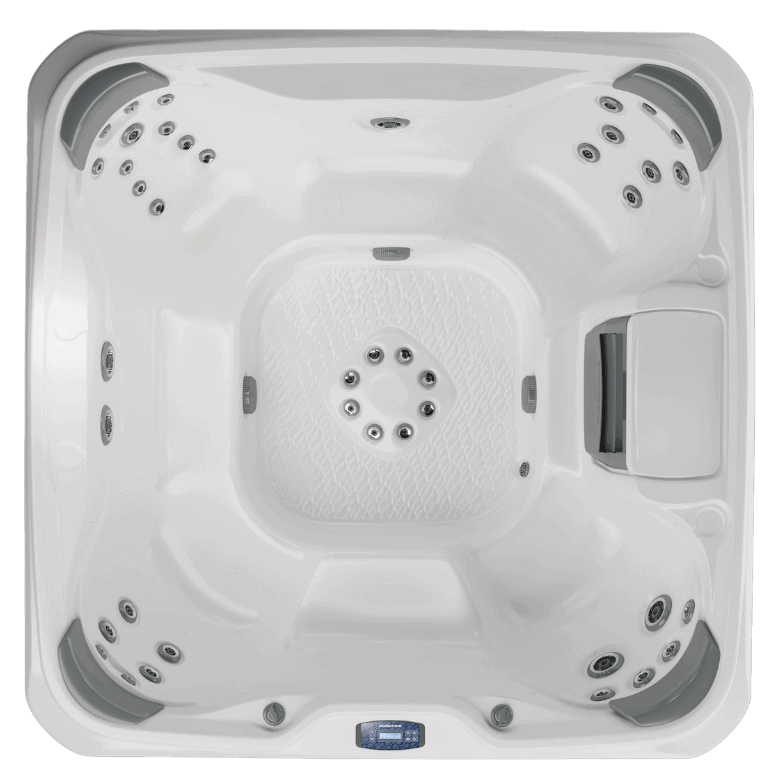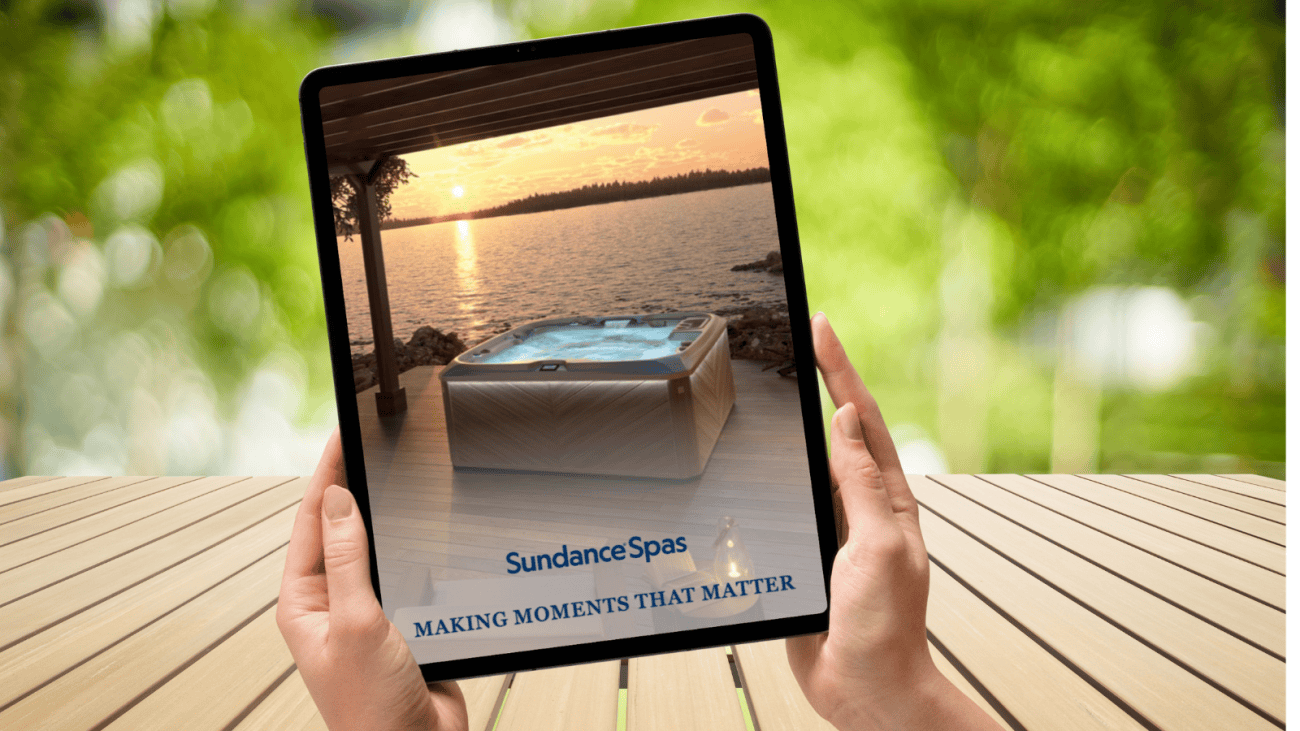
News
1-Pump vs. 2-Pump Hot Tubs: Which is Better for You?
When shopping for a hot tub, you’ll quickly realize that one of the key decisions you’ll need to make is whether to go for a 1-pump or a 2-pump system. The number of pumps in a hot tub can significantly impact its performance, efficiency, and overall experience. Understanding the differences between a single-pump and a dual-pump hot tub is crucial in making an informed choice that suits your needs and lifestyle.
What is a 1-Pump Hot Tub?
A 1-pump hot tub is equipped with a single pump responsible for powering the jets and most often, circulating the water. This pump performs double duty, providing both the hydrotherapy experience and maintaining water circulation for filtration and heating.
Benefits of 1-Pump Hot Tubs:
- Cost-Effective: One of the biggest advantages of a 1-pump hot tub is its cost. Fewer components mean a lower upfront price, which makes these hot tubs an attractive option for budget-conscious buyers.
- Lower Energy Consumption: With the ability to only ever have one pump running, these hot tubs typically use less electricity. This can lead to lower energy bills over time, making them more economical in the long run. ( More on this later)
- Electrical Installation: Whilst a single pump spa should still be on its own separate supply, just like a double pump unit, the ultimate cost of the circuit may be slightly reduced. This is mainly due to the cable not needing to be as thick. Also, if you live in an older property with less overall supply than a new build, a single pump unit may be the perfect fit, by not overloading things. You can read more about 13 amp vs 32 amp tubs here.
- Simpler Maintenance: Fewer pumps mean fewer components that could potentially require maintenance or replacement. This simplicity often translates to less frequent repairs and lower overall maintenance costs. However, it could be argued that with only one pump doing all the work, it may not last as long as a multi-pump spa.
- Space-Efficient: A 1-pump hot tub generally takes up less physical space, as the cabinet does not need to accommodate multiple motors. Making them a good choice for smaller outdoor areas or indoor installations.

Drawbacks of 1-Pump Hot Tubs:
- Limited Power: A single pump has to distribute its power across all jets, which can result in reduced water pressure, especially if you have a larger hot tub or multiple people using it simultaneously. The hydrotherapy experience may not be as intense as with a dual-pump system.
- Less Versatility: Since the same pump is responsible for both jet action and water circulation, you might end up in a situation where you cannot turn off the pump to enjoy a soak in silence. For example, if the hot tub needs to heat or is amid a filtration cycle, it will only offer the option of switching between low-high power. Whereas a spa with a separate circulation pump, often found on higher-priced two-pump spas, can be enjoyed in almost silence.
- Noise: Whilst not always true, most single-pump hot tubs rely on the main pump for filtration. If your spa filters or heats at night, you may want to consider where it is located in the garden, due to the slightly increased noise of these larger pumps operating on low speed.
- Not Ideal for Larger Tubs: In larger hot tubs, a single pump may struggle to provide adequate power to all the jets, leading to an uneven experience where some seats have stronger jet action than others.
What is a 2-Pump Hot Tub?
A true 2-pump hot tub features two separate hydrotherapy pumps, with each powering different seats within the spa. It’s worth making a clear distinction here. When we are talking about 1 or 2 pumps, we are very much referring to the powerful hydrotherapy pumps. We have many spas that are technically on paper, 3 pump spas. However, the third pump is a much smaller, less powerful circulation pump, that does not contribute to circulation. We would never categorise a spa with 1 hydrotherapy pump and 1 smaller circulation pump as being a 2-pump spa, but look out for those who might.
Benefits of 2-Pump Hot Tubs:
- Enhanced Power and Performance: With two pumps, you can enjoy stronger water pressure and a more invigorating hydrotherapy experience. Each pump can focus on its specific seat or seats, ensuring optimal performance and hydrotherapy. You will almost always experience a better level of massage in a two-pump spa.
- Greater Hydrotherapy features: Due to there being more flow, you can now start to experience some extra benefits in the spa, such as a foot massage dome in the centre of the spa, or a whirlpool jet. Such features would use too much water flow in a single pump spa, causing the seats to feel rather lacklustre.
- Greater Control: Having two pumps allows you to control different zones of the hot tub independently. This means you can enjoy full jet power in one area of the spa, while the other side is completely tranquil, with no jets on at all. Perfect for couples who cannot decide if they want the jets on or off!
- Better for Larger Tubs: If you have a larger hot tub or one with multiple seating options, a dual-pump system ensures that all jets receive sufficient power, delivering a consistent and satisfying experience for everyone.

Drawbacks of 2-Pump Hot Tubs:
- Higher Cost: The additional pump adds to the initial purchase price, making 2-pump hot tubs more expensive upfront. This can be a significant factor for those on a tight budget.
- Increased Energy Consumption: Running two pumps, does in theory, require more electricity, leading to higher energy bills. However, you can absolutely choose to only use one pump at a time if thats all you need, bringing the running cost inline with a single pump spa. The two pumps do not operate in unison, so if it’s a single bather in the spa, they can just use one pump if they wish. Saving the use of both pumps for when a partner joins them for example.
- More Complex Maintenance: With an additional pump comes the potential for more maintenance issues. While modern hot tubs are generally reliable, a 2-pump system, does by design have more parts that could require attention over time.
- Larger Footprint: The additional pump and related components can make 2-pump hot tubs larger and heavier, which might require more space for installation.
- Electrical Installation: Because the ultimate energy usage of a two-pump spa is greater than a single pump, you may need a larger energy supply to run out to the garden. Whilst the labour will ultimately be the same, your electrician may have to charge you more for the thicker cable needed to power the circuit.
How much extra electricity will a two-pump spa use, above that of a single-pump spa?
Well this is nice and easy to calculate. A one-speed, 1.5 kW pump will use 1.5kW of electricity an hour. For this example we will assume you pay £0.20p per Kw hour. Therefore, 1.5 x £0.20p = £0.30p. So thats it, an extra 30 pence to enjoy a second pump for one whole hour of enjoyment!
Hyperion Hot Tubs
Which Hot Tub is Right for You?
Choosing between a 1-pump and a 2-pump hot tub ultimately depends on your priorities and how you plan to use your hot tub.
- For Budget-Conscious Buyers: If cost is a primary concern and you’re looking for a simple, efficient system, a 1-pump hot tub may be the ideal choice. It offers reliable performance for solo use or small gatherings without the extra expense.
- For Hydrotherapy Enthusiasts: If you’re seeking a more powerful and customizable hydrotherapy experience, a 2-pump hot tub is worth the investment. The enhanced power and control make it better suited for those who prioritize a therapeutic massage or who often have multiple users in the tub.
- For Smaller Spaces: If space is limited, a 1-pump hot tub may be more suitable due to its smaller size and simpler installation requirements. It’s also a good option if you plan to use the hot tub primarily for relaxation rather than intensive hydrotherapy.
- For Larger Families or Social Gatherings: If you frequently entertain guests or have a large family, a 2-pump hot tub ensures that everyone can enjoy a strong and consistent jet action, even when the tub is full.
Conclusion
Both 1-pump and 2-pump hot tubs have their distinct advantages and are designed to cater to different needs. If you value simplicity, cost-effectiveness, and lower energy usage, a 1-pump hot tub might be your best bet. On the other hand, if you’re after a more powerful and versatile experience, and don’t mind the additional investment, a 2-pump hot tub offers superior performance and control. By carefully considering your budget, space, and how you plan to use your hot tub, you can choose the system that will provide you with the most enjoyment and relaxation for years to come.

